Check out our range of stock.
Didn't find what you like?
Send us a message
Found something out of stock?
Send us a message

The Blood Red Hi-Fin Swordtail is a stunning fish that will give you that pop of colour in any tank. The Swordtail is a peaceful live bearer species that is quite easy to breed. Both males and Females available, females wont have the extension on the tail.
$15.00 $10.00

Short Description:Welcome the incredible Australian Yabby Crayfish to your aquarium! Renowned for its hardiness, vibrant blue morphs, and engaging behavior, the Common Yabby (Cherax destructor) is a perfect choice for both beginner aquarists and experienced aquaculture enthusiasts. Add a unique touch of life to your tank with this fascinating freshwater crustacean. Key Features & Highlights (Bullet Points) 🎨 STUNNING COLOR VARIATIONS: While often a classic slate blue or olive green, we selectively offer stunning electric blue and even ghostly white specimens. Each Yabby is uniquely beautiful. 💪 INCREDIBLY HARDY & ADAPTABLE: Known for their resilience, Yabbies tolerate a wide range of water conditions, making them an excellent choice for those new to keeping crayfish. 🐾 ACTIVE & ENTERTAINING: Watch them explore, scavenge, and burrow! Yabbies are full of personality and provide endless fascination as they interact with their environment. 🌱 PERFECT FOR AQUACULTURE: A fast-growing species, Yabbies are a popular choice for sustainable home harvesting or farm pond rearing (where permitted). 🔍 NATURAL ALGAE EATER: They help keep your tank clean by consuming leftover food, detritus, and soft algae, acting as a valuable part of your aquarium's cleanup crew. Detailed Description Bring a piece of Australian freshwater ecosystems into your home with the remarkable Yabby Crayfish. Cherax destructor, whose scientific name hints at its powerful claws, is one of the most common and beloved crayfish in the aquarium trade—and for good reason! These charismatic crustaceans are not just survivors; they are thrivers. Their curious nature and constant scavenging make them a captivating centerpiece in any suitable aquarium. You'll be mesmerized watching them methodically explore every rock, cave, and plant, using their delicate antennae to sense their world. Beyond their beauty, Yabbies are practical. They are prolific consumers of waste, helping to maintain a balanced and cleaner tank environment. Whether you're looking for a unique pet, a biological cleanup crew member, or a sustainable aquaculture project, the versatile Yabby is an outstanding choice. Ideal For: Species-only aquariums Large community tanks with fast, top-dwelling fish (use caution with bottom-dwellers) Educational classroom habitats Sustainable aquaculture and pond systems Aquarists seeking a low-maintenance but engaging invertebrate Care Guide & Specifications (At a Glance) Parameter Requirement Tank Size Minimum 20 gallons for one adult. Larger is always better. Water Temp 60°F - 75°F (16°C - 24°C) pH Level 7.0 - 8.0 (Neutral to Slightly Hard) Temperament Semi-Aggressive. Best kept alone or with species that won't be seen as food or competition. Diet Omnivore. Sinking pellets, blanched vegetables (zucchini, cucumber), algae wafers, and occasional protein (bloodworms, small pieces of fish). Lifespan Typically 3-5 years, but can live longer with excellent care. Adult Size 4 - 8 inches (10 - 20 cm) Important Notes & Considerations ⚠️ CANNABALISTIC TENDENCIES: Housing multiple Yabbies together, especially in a small tank, can lead to aggression and cannibalism. Provide ample space and hiding spots if attempting a group. 🦀 EXPERT ESCAPISTS: A secure, tight-fitting lid is NON-NEGOTIABLE. Yabbies are famous escape artists and will find any gap. 🌿 LIVE PLANTS: Be aware that Yabbies are natural diggers and foragers. They may uproot or eat tender live plants. Hardy plants like Java Fern or Anubias are safer choices. 🐠 TANKMATES: Choose carefully! They may try to catch slow-moving or bottom-dwelling fish (e.g., Corydoras, fancy Goldfish). Fast, upper-level fish (e.g., Danios, Tetras) are safer. Live Arrival Guarantee:We pride ourselves on careful packaging and shipping. Our live arrival guarantee ensures your Yabbies are delivered healthy and active. Please be prepared to acclimate them immediately upon arrival. Why Choose Us? ✅ Ethically Sourced: Our Yabbies are sourced from reputable breeders. ✅ Healthy & Vibrant: We ensure all livestock is quarantined and healthy before sale. ✅ Expert Support: Have questions? Our team of aquarium experts is here to help you succeed! Add this amazing invertebrate to your cart today and enjoy the unique experience of keeping a Yabby Crayfish!
$4.50
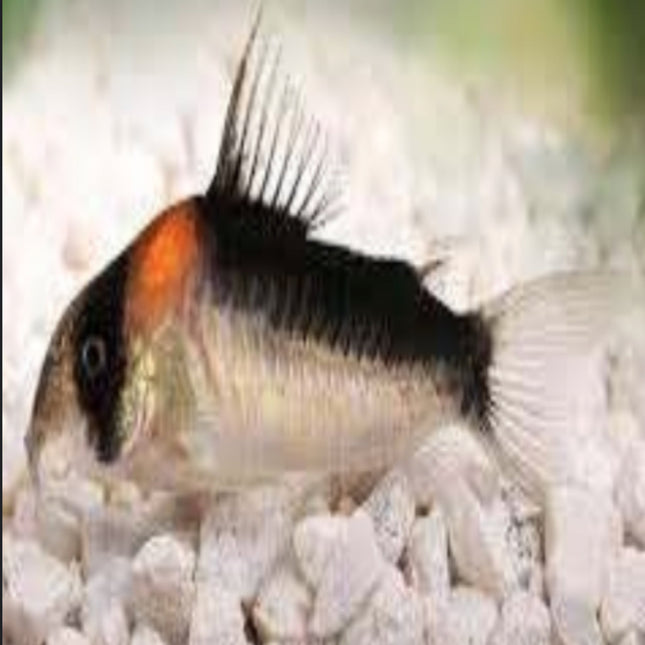
Corydoras Adolfoi: One of the Most Mysterious Fish in the Aquarium World OVERVIEW: These flashy and peaceful little freshwater fish are a rare find in the aquarium world. They have been making appearances for only as long as any one can remember, but no one is quite sure why they’re so elusive! The dolfo's cory cat fish (lat. Catfish Corydoras adolfoi) might be small-sized, brightly colored, and usually very calm when kept in an aquarium—but this recent newcomer to tanks has less popularity than other species of its own genus. Catfish are the perfect nocturnal creatures. They like to stay at the bottom of an aquarium and can only be seen in their natural habitat during nighttime hours because they're so small-featured! Some catfish, such as Glass Catfishes and Upside Down Catfish that reside on top surfaces of water tanks from time to time, have evolved a different strategy for survival than most other types of fish who live at or near the ground level. HABITAT: It seems that this Corydoras endemic is likely encountered only in the Rio Negro tributaries, São Gabriel da Cachoeira municipality, Brazil. However many sources state that these fish species are found living in slow-moving blackwater tributaries and flooded forest areas - where their water has a special tea color because it's been so rich with tanning substances for years now. SIZE AND LIFE SPAN OF CORYDORAS ADOLFOI 3CM: Corydoras Adolfoi is a unique fish that can live up to 5 years. Females are about five and half centimeters long, while the males are just slightly shorter in length at four and three quarters of a centimeter. These little guys have no teeth or scales but they do know how to defend themselves with their thick skin! Corydoras adolfoi measures an average size for females around five and one-half centimeters long whereas males measure approximately 4 3/4 cm on average making them relatively small in comparison; however these aquatic creatures prove fierce defenders thanks to their tough textured skin which has neither teeth nor scales. COLOR: Adolfo's Catfish has a beautiful coloring that resembles the one of corydoras panda, but it is unlike this fish because Adolfo’s catfish also holds an orange spot located between its dorsal and eyes. There is a black strip across its back with another going across both of his eyes. BEHAVIOR: Adolfo's catfish are not only active during the day but they also have a variety of behaviors. Catfish can spend most of their time on the tank bottom looking for food, swim to the water surface in order to take some air or be found deep within layers of medium-sized fish. TANK MATES: Catfish are group animals, so to make them feel most comfortable they need their species around. To create a complete fish school you will need at least 8 different types of catfish! If your tank is smaller than 500 gallons it may be difficult or even impossible for any one type of catfish to thrive on its own because the competition between other fish in the environment would drive that particular species away from an area and into extinction due to isolation. As you’ve understood, the best tank mates for your fish are its relative species. Keep in mind that various Corydoras can't be kept together and they should stay in one school so Adolfo's catfish won't fight with panda corys. If these fishes aren't aggressive towards Adolfo's catfish then it will be happy to share your home peacefully as well! FEEDING: With Corydoras, it's all about the bottom of the tank. These fish will eat most food that sinks to there. You'll want to supplement sinking algae pellets with flake foods, dried foods or other sinking goods like catfish pellets for a complete diet-scheme. Though these animals do have their carnivorous side, they also love Bloodworm and Brine Shrimp as treats! GENDER DIFFERENCES: corydoras adolfoi's females are admittedly larger than their male counterparts. The difference in size is especially pronounced when it comes to the reproductive fish species of this genus, with the female being much bigger and more dominant during mating rituals. BREEDING: Breeding is an interesting process that can be a little difficult. One of the most important aspects to breeding Corydoras fish for example, you should put one female and two males into separate tanks with high-quality food. When it's time to breed your new favorite pet in a tank full of water, start by putting just one female fish together with two male ones inside their own individual containers filled up completely from top to bottom every day while providing them feeders packed tight with protein rich foods such as beef heart or shrimp pieces twice per day ad libitum (ad liberally) until they become ravenously hungry within 8 hours after being fed each time because this tells you that they are ready for action! Adolfo's catfish may lay eggs right on the tank bottom, but it is recommended to add some lobed leaves or a synthetic shower pouf. Female fish can start laying their eggs quickly after puberty and mating; this process starts with them getting rounded up due to pregnancy. To make sure your female fish stays healthy during her journey of spawning, you should have water that remains cold at all times in addition to increasing its flow simultaneously because they're not able get enough oxygen otherwise as they are very sensitive when pregnant. Both the egg incubation time and hatching are dependent on ambient temperature with a typical range of 3-4 days. The larvae's ability to eat their yolk sacs enables them to start feeding themselves, which is when live food can be introduced into the diet such as brine shrimp or other similar foods. Most breeders add some methylene blue or any substances that help prevent fungal infection in order for eggs to hatch properly without being harmed during this process after about three four days at most depending on environmental temperatures. FAQ Is Corydoras adolfoi and Corydoras duplicareus the same? Corydoras adolfoi and Corydoras duplicareus are both a type of catfish with different adaptations, but they do have one noticeable difference: serrations on the posterior edge of their pectoral fin spine that can only be seen if you shine light from underneath it to see them up close. Corydoras adolfoi tends to be more slender than its counterpart while also having narrower black bands; however, like other genetically related fish species such as humans or sled dogs (or any dog breed for that matter) there is variation in how these two types look depending on where they live because water quality influences weight gain and slimness just like diet does!
$28.00
![[ARRIVED 5 - JUN - 2025] Bottom Feeding Tablets 135g - Nano Tanks Australia](http://nanotanksaustralia.com.au/cdn/shop/files/arrived-5-jun-2025-bottom-feeding-tablets-135g-314736.png?v=1749114197&width=645)
Algae wafers 135g. Vegetarian food for bottom feeders and algae eaters. Great for pleco, shrimp, and snails. Algae wafers contain high levels of vegetables that provide the nutritional requirements for most bottom feeders and algae eaters. Enriched in vitamins and nutrients that promote health and vitality.
$25.00
![[ARRIVED 5 - JUN - 2025] Gold Axolotl 12 - 15cm - Nano Tanks Australia](http://nanotanksaustralia.com.au/cdn/shop/files/arrived-5-jun-2025-gold-axolotl-12-15cm-670199.jpg?v=1749114211&width=645)
Axolotls: A Giant Salamander with a Superpower The Mexican walking fish The Axolotl is a fascinating creature rarely seen by people in the wild, descending from the tiger salamander Ambystoma tigrinum and indigenous to central Mexico for about 10,000 years. Axolotls are a newer species that evolved after the chaos and floods in North America after the younger dryas period, and so this creature gives us insights into an emergent species. Sadly, much of its suitable habitat has been drained due to human intervention. These two spring-fed lakes (lake Xochimilco and lake Chalco) along the southern edge of the Basin of Mexico has been reduced by 77% recently. Scientific research has discovered something amazing Did you know these Salamanders have superpowers? First, Axolotls are specially designed for camouflage. With dark-colored bodies and the ability to shift their hue a few shades lighter or darker as needed, they can easily blend in with leaves on trees! Pink and light-colored variations are bred only by humans to make for an interesting-looking pet. Axolotls are able to regenerate a new limb five times without even leaving scars – and do it in a matter of weeks. Also, the Axolotl can regenerate organs, jaws, and spines and can do this countless times while being entirely functional. Scientists want to understand the ability that Axolots inherently possess, so it is an extensively studied creature. To top it off, they say that this Axolotl has an innate superpower to resist cancer—1,000 times more than mammals. Indeed an amazing creature and a worthy critter for observation in the aquarium. Axolotl Size The Axolotl is a strange and fascinating creature that can grow up to 25cm. Axolotls are the fastest-growing frog-like creatures on earth! After reaching sexual maturity at 8 or so centimeters, most continue their growth until they reach about 20 cm long before stopping. Since Victorian times, they have been bred as pets but were only scientifically classified by scientists in 1859 when Mr. Charles Darwin gave them the funky name Axolotl Ambystoma Mexicanum because he found one near Mexico City while doing research. Diet In the wild, axolotls feed on snails, worms, crustaceans, and small fish. They can be fed a variety of brine shrimp or frozen food in captivity instead of wild food to avoid parasites that their natural prey could carry. In general, they do not need vitamins for healthy growth because they have a healthy appetite. However, it’s essential to ensure he has plenty of quality protein since his primary source would otherwise come from munching on other creatures. Adult axolotls appreciate a feed about once a week. One way to feed them is to place food with round-nosed forceps in the tank near where your animal lives, and you may also drop food into their water, as close to them as possible when they are active. If it seems like your Axolotl doesn’t eat much during daylight hours, try feeding it in the evening so uneaten food does not stay in the water. Axolotl Life Span There are few things as fascinating as axolotls. Strangely, Axolotls have been known to live past 20 years- but it is unusual (and almost unheard of) for one to make it over 10! Axolotl Housing A 60 litre reptile aquarium is the perfect size for one adult axolotl, but it can become messy due to constant waste. If you are looking for a 100+ litre tank instead, you will avoid this issue; in fact, I recommend doing so because as soon as you add in fish, it would be a messy affair. Ensure water parameters stay at an optimum level by filling the whole thing up and changing the water regularly, or else mold will start growing on anything inside! A filter will help maintain safe water parameters but beware of the conditions axolotls like. However, ensure that your tank has a spray bar or some other type of outlet to quickly and safely spread this water throughout. Axolotls do not tolerate strong flows so they need more delicate care than fish otherwise their health may suffer in ways from losing their appetite to developing stress-related diseases. Lighting and Temperature Axolotls do not require lighting, and new axolotls may be shy if kept in a brightly lighted tank. Lighting is for our viewing pleasure and the benefit of aquarium plants, not the Axolotls. This Salamander lives in habitats such as caves, amongst wood or vegetation. It would be wise to mimic this in the tank. Choose a plant-friendly bulb that does not produce excess light and heat above what is required for plants. Axolotls, like most amphibians, are cold-blooded and need warmer water temperatures to function. If you have a hot home temperature be wary! An axolotls ideal temperature range falls between 18°C – 24°C with anything higher than 24 ° C being potentially fatal if left unattended long enough. This will lead them to not eat due to it feeling uncomfortable from all the extra stress on their body just trying to keep themselves cool. Axolotl Aquarium Substrate The ideal substrate for axolotls is aquarium-safe sand-like Aqua Terrarium Sand. Unfortunately, axolotls have a bad habit of ingesting gravel and mouth-sized objects if available but can be prevented by using large pebbles instead. Anything the size of an axolotl’s head or larger will not end up in their stomach! Salamanders need a substrate in their environment, but Axolotls do not. Many people keep them without any type of substrate. It does look nice to have an aesthetic base for the aquarium; however, this can cause water parameters to change more quickly because there is no surface area on which beneficial bacteria grow. We recommend using our bio-filter balls in the shop, already packed full of beneficial bacteria. Many salamander owners use substrates as part of their natural habitat design while many axolotl enthusiasts enjoy using nothing at all! I love how they make my tank looks very clean with just plants and rocks scattered around the bottom. Axolotl Breeding Behaviour Axolotl mating starts with a waltz. After the male and female nudge one another’s urogenital opening called the cloaca, they take to dancing circles in what could almost be referred to as a ballroom dance. The male Axolotl then struts away while shimmying his tail like a hula dancer, luring the female to follow. As they step together and dance their way in unison, he drops a small capsule full of sperm called a spermatophore for her to pick up with her cloaca as soon she just skirts over it. Axolotls Common Health Problems A notable characteristic of axolotls is their regenerative powers. But this remarkable ability doesn’t protect them from all health issues. For example, unsanitary tank conditions can lead to viral or bacterial infections, the signs of which include lethargy and a lack of appetite. Plus, ammonia buildup from waste in the tank can be toxic if it occurs–likely due to its corrosive qualities on organic matter like gills and neural tissue alike! Moreover, axolotls with gravel in their tank that’s small enough to eat are prone to gastrointestinal obstructions. If your Axolotl experiences an obstruction, it will be sluggish and not want to eat much. And if you don’t promptly treat the problem, death can occur quickly. FAQ How do you pronounce Axolotl? - Axolotl is pronounced as ak·suh·laa·tl Are axolotls endangered? - Axolotls are considered a critically endangered species by the International Union for Conservation of Nature and Natural Resources. Their population has been declining due to human intervention, with their numbers dropping from 6000 individuals per square kilometer in 1998 to 100 just ten years later. A more recent survey found only 35 axolotls left within a single square kilometer in 2015! My Axolotols don't have legs? Sometimes Axolotls do bite each others' legs off. Given the right conditions they should regenerate within 2-3 months.
$150.00 $99.00
![[ARRIVED 5 - JUN - 2025] Leucistic Axolotl 12 - 15cm - Nano Tanks Australia](http://nanotanksaustralia.com.au/cdn/shop/files/arrived-5-jun-2025-leucistic-axolotl-12-15cm-469907.jpg?v=1749114209&width=645)
Axolotls: A Giant Salamander with a Superpower The Mexican walking fish The Axolotl is a fascinating creature rarely seen by people in the wild, descending from the tiger salamander Ambystoma tigrinum and indigenous to central Mexico for about 10,000 years. Axolotls are a newer species that evolved after the chaos and floods in North America after the younger dryas period, and so this creature gives us insights into an emergent species. Sadly, much of its suitable habitat has been drained due to human intervention. These two spring-fed lakes (lake Xochimilco and lake Chalco) along the southern edge of the Basin of Mexico has been reduced by 77% recently. Scientific research has discovered something amazing Did you know these Salamanders have superpowers? First, Axolotls are specially designed for camouflage. With dark-colored bodies and the ability to shift their hue a few shades lighter or darker as needed, they can easily blend in with leaves on trees! Pink and light-colored variations are bred only by humans to make for an interesting-looking pet. Axolotls are able to regenerate a new limb five times without even leaving scars – and do it in a matter of weeks. Also, the Axolotl can regenerate organs, jaws, and spines and can do this countless times while being entirely functional. Scientists want to understand the ability that Axolots inherently possess, so it is an extensively studied creature. To top it off, they say that this Axolotl has an innate superpower to resist cancer—1,000 times more than mammals. Indeed an amazing creature and a worthy critter for observation in the aquarium. Axolotl Size The Axolotl is a strange and fascinating creature that can grow up to 25cm. Axolotls are the fastest-growing frog-like creatures on earth! After reaching sexual maturity at 8 or so centimeters, most continue their growth until they reach about 20 cm long before stopping. Since Victorian times, they have been bred as pets but were only scientifically classified by scientists in 1859 when Mr. Charles Darwin gave them the funky name Axolotl Ambystoma Mexicanum because he found one near Mexico City while doing research. Diet In the wild, axolotls feed on snails, worms, crustaceans, and small fish. They can be fed a variety of brine shrimp or frozen food in captivity instead of wild food to avoid parasites that their natural prey could carry. In general, they do not need vitamins for healthy growth because they have a healthy appetite. However, it’s essential to ensure he has plenty of quality protein since his primary source would otherwise come from munching on other creatures. Adult axolotls appreciate a feed about once a week. One way to feed them is to place food with round-nosed forceps in the tank near where your animal lives, and you may also drop food into their water, as close to them as possible when they are active. If it seems like your Axolotl doesn’t eat much during daylight hours, try feeding it in the evening so uneaten food does not stay in the water. Axolotl Life Span There are few things as fascinating as axolotls. Strangely, Axolotls have been known to live past 20 years- but it is unusual (and almost unheard of) for one to make it over 10! Axolotl Housing A 60 litre reptile aquarium is the perfect size for one adult axolotl, but it can become messy due to constant waste. If you are looking for a 100+ litre tank instead, you will avoid this issue; in fact, I recommend doing so because as soon as you add in fish, it would be a messy affair. Ensure water parameters stay at an optimum level by filling the whole thing up and changing the water regularly, or else mold will start growing on anything inside! A filter will help maintain safe water parameters but beware of the conditions axolotls like. However, ensure that your tank has a spray bar or some other type of outlet to quickly and safely spread this water throughout. Axolotls do not tolerate strong flows so they need more delicate care than fish otherwise their health may suffer in ways from losing their appetite to developing stress-related diseases. Lighting and Temperature Axolotls do not require lighting, and new axolotls may be shy if kept in a brightly lighted tank. Lighting is for our viewing pleasure and the benefit of aquarium plants, not the Axolotls. This Salamander lives in habitats such as caves, amongst wood or vegetation. It would be wise to mimic this in the tank. Choose a plant-friendly bulb that does not produce excess light and heat above what is required for plants. Axolotls, like most amphibians, are cold-blooded and need warmer water temperatures to function. If you have a hot home temperature be wary! An axolotls ideal temperature range falls between 18°C – 24°C with anything higher than 24 ° C being potentially fatal if left unattended long enough. This will lead them to not eat due to it feeling uncomfortable from all the extra stress on their body just trying to keep themselves cool. Axolotl Aquarium Substrate The ideal substrate for axolotls is aquarium-safe sand-like Aqua Terrarium Sand. Unfortunately, axolotls have a bad habit of ingesting gravel and mouth-sized objects if available but can be prevented by using large pebbles instead. Anything the size of an axolotl’s head or larger will not end up in their stomach! Salamanders need a substrate in their environment, but Axolotls do not. Many people keep them without any type of substrate. It does look nice to have an aesthetic base for the aquarium; however, this can cause water parameters to change more quickly because there is no surface area on which beneficial bacteria grow. We recommend using our bio-filter balls in the shop, already packed full of beneficial bacteria. Many salamander owners use substrates as part of their natural habitat design while many axolotl enthusiasts enjoy using nothing at all! I love how they make my tank looks very clean with just plants and rocks scattered around the bottom. Axolotl Breeding Behaviour Axolotl mating starts with a waltz. After the male and female nudge one another’s urogenital opening called the cloaca, they take to dancing circles in what could almost be referred to as a ballroom dance. The male Axolotl then struts away while shimmying his tail like a hula dancer, luring the female to follow. As they step together and dance their way in unison, he drops a small capsule full of sperm called a spermatophore for her to pick up with her cloaca as soon she just skirts over it. Axolotls Common Health Problems A notable characteristic of axolotls is their regenerative powers. But this remarkable ability doesn’t protect them from all health issues. For example, unsanitary tank conditions can lead to viral or bacterial infections, the signs of which include lethargy and a lack of appetite. Plus, ammonia buildup from waste in the tank can be toxic if it occurs–likely due to its corrosive qualities on organic matter like gills and neural tissue alike! Moreover, axolotls with gravel in their tank that’s small enough to eat are prone to gastrointestinal obstructions. If your Axolotl experiences an obstruction, it will be sluggish and not want to eat much. And if you don’t promptly treat the problem, death can occur quickly. FAQ How do you pronounce Axolotl? - Axolotl is pronounced as ak·suh·laa·tl Are axolotls endangered? - Axolotls are considered a critically endangered species by the International Union for Conservation of Nature and Natural Resources. Their population has been declining due to human intervention, with their numbers dropping from 6000 individuals per square kilometer in 1998 to 100 just ten years later. A more recent survey found only 35 axolotls left within a single square kilometer in 2015! My Axolotols don't have legs? Sometimes Axolotls do bite each others' legs off. Given the right conditions they should regenerate within 2-3 months.
$150.00 $99.00
![[ARRIVED 5 - JUN - 2025] Pro's Choice Bottom Feeders Fish Food Sinking Wafers 72g - Nano Tanks Australia](http://nanotanksaustralia.com.au/cdn/shop/files/arrived-5-jun-2025-pros-choice-bottom-feeders-fish-food-sinking-wafers-72g-514463.jpg?v=1749114193&width=645)
Description: 9mm pellet Manufacturer:Pro's Choice Features Pro's Choice Bottom Feeders. Digestible and Healthy formula. Sinking Wafers. Pro's Choice Bottom Feeders Sinking Wafers are formulated scientifically to improve colour enhancement, healthy growth and disease resistance, enriched with Multi vitamin supplements, Spirulina, Seaweed and vegetable. Pro's Choice Bottom Feeders Sinking Wafers will not cloud the water if fed properly. Made in Taiwan. Ingredients: Wheat flour, Fish meal, Spirulina, Shrimp meal, Soy protein isolate, Seaweed, Alfalfa meal, Scallop meal, Wheat germ, Krill meal, Yeast powder, B-Carotine, L-lysine, DL-methionine, Lecithin, Vitamin Premix & Minerals, Ethoxyquin (as a preservative)
$14.00
![[ARRIVED 5 - JUN - 2025] Todays Tubifex Worms 50g - Nano Tanks Australia](http://nanotanksaustralia.com.au/cdn/shop/files/arrived-5-jun-2025-todays-tubifex-worms-50g-604003.jpg?v=1749114204&width=645)
Description: Freeze dried fish food (N-TW-50) Manufacturer:Today's Features Today's Freeze Dried wild caught Tubifex Worms. New pop top. Today's unique food is actually tubifex worms processed by the new freeze dried technique. Removal of moisture under vacuum at sub zero temperature. This process preserves the excellent nutritional factors of live Tubifex worms and also preserves their flavour. Just like real worms. Without all the fuss and bother. In cube form. Excellent for all varieties of Tropical Fish, Gold fish, Marine fish and turtle. No refrigeration required. Keep sealed when not in use. Made in Taiwan.
$18.00
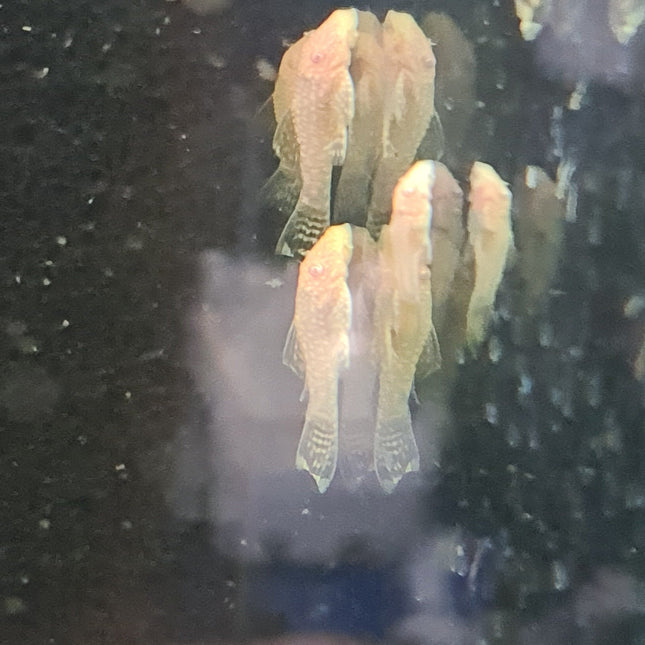
The Albino Bristlenose is a variety of the common Bristlenose catfish, a popular freshwater aquarium fish. It is named for its distinctive bristle-like protrusions on its face, which are used to help the fish navigate and sense its environment. The Albino Bristlenose has a white or pinkish body and red eyes, due to a lack of pigmentation in the skin and scales. It typically grows to be about 3-5 inches long, making it a relatively small and manageable aquarium fish. In addition to its unique appearance, the Albino Bristlenose is known for its hardiness and ease of care. It is a peaceful, herbivorous fish that does well in community tanks with other non-aggressive species. They are also effective at keeping aquariums clean, as they feed on algae and other organic matter. Overall, the Albino Bristlenose is a great choice for aquarium hobbyists looking for a visually interesting, low-maintenance fish that can also help keep their tank clean.
$15.00
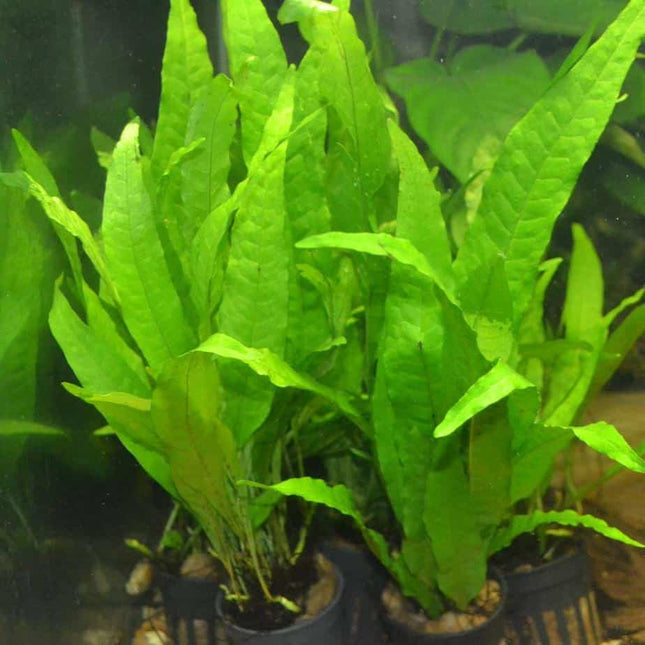
JAVA FERN: THE BEST PLANT FOR YOUR PLANTED AQUARIUM Java ferns (microsorum pteropus) are perfect for aquariums. They're small, easy to grow, and don't need a lot of light to survive. Ask us for varieties we have available. For example, there are needle leaf varieties that require bright lights, as well as more traditional 'jungle' leaves such as the Narrow Leaf, Lance Leaf, and Windelov – their many varieties to suit your needs inside your aquarium. Your fish will appreciate the natural hiding spots provided by Java Fern so they can get away from time to time and feel safe and secure when they want it. Identification If you want a true aquatic plant that can grow when submerged in water or even partially out, then the Java fern is perfect for your tank. Our diverse line of beautiful and delicate-looking Java plants are perfect for people who prefer an aesthetic look inside their home aqua garden without crazy maintenance requirements. When you require a go-to plant that looks great in almost any aquascapes, go with Java Ferns (from Nano Tanks Australia with our aquascaping expertise, of course!). The narrow-leaf Java fern generally boasts long, skinny leaves, with the plant growing to a height of 10-12 inches (25-30 cm). Java Fern is perfect for those who have limited space or are trying to create an artificial jungle feel in their aquarium. The plants need bright light, but indirect (not right under the light), so they can grow properly. Keep in mind the sun has a much more potent energy than your tiny aquarium lights, so aquarium keepers can tend to underestimate the wattage and spectrum required. Saying that, in nature Aquatic Java Fern tends to never receive direct light in the jungle river. So although the Java Fern will be fine with low light in the tank, its growth rate will not impress you. What You Should Know about Java Fern It's probably better than any other plant that would grow inside an aquatic environment for this reason - its fronds are big enough for fish to swim through them without getting stuck between leaves. A striking addition to any freshwater planted aquarium, perfect if you have cichlids or South American fish. Fortunately, it's also relatively easy for plant-eating goldfish and other tank mates to leave it alone because of its tough rhizomes! Java Fern does well in water with pH levels between 6-7.5, as long as the alkalinity stays below eight dKH (aka carbonate hardness). If you see black spots (or brown spots) in your plant's leaves, don't worry - they do that. Java ferns have veins running through them, and sometimes new bumps will pop up on the leaf from which a new shoot emerges. Planting and Replanting Java Fern in the Aquarium Java ferns grow beautifully with other live plants since they are so robust, but they also make a great centrepiece for the aquarium when planted alone. Alternatively, you can attach java fern to aquarium decorations (like rock or driftwood) to create an elegant look that will not overwhelm your fish tank with too much greenery! Java Fern is a hardy plant that can live in any tank size, making it perfect for apartment dwellers who don't have room for large aquariums! If the water stays clean (and you're not adding liquid fertiliser), this resilient Fern's growth will remain consistent without any problems. The Fern prefers water with soft-to-moderate temperatures of 22 degrees Celsius. Data at a glance for Java Fern Family: Polypodiaceae Care Level: Easy Growth Rate: Low to Moderate Maximum Size: 30cm Minimum Tank Size: 20 Litres (tall tank) Water Conditions: 20-28°C pH 6.0-7.5 KH 3-8 Lighting: Low to Moderate (Depending on the desired rate of growth) Propagation: Adventitious Plantlet/Rhizome Division Placement: Mid to Background
$15.00
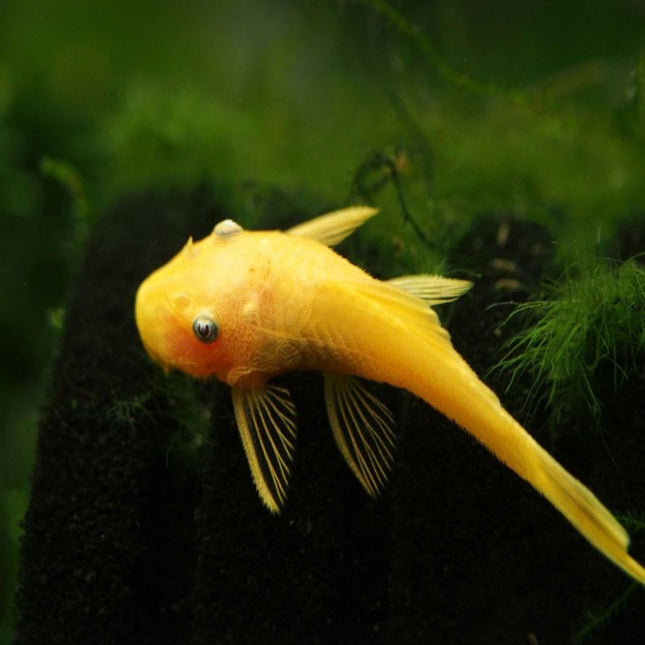
The Blue Eye Lemon Bristlenose Pleco is a member of the Loricariidae family. The fish species are often bred in aquariums and can be easily distinguished by its brown marbled pattern, which includes bristles on their facial area as it grows older. Both males and females grow these appendages with age starting from sub-adulthood until they become adults.
$15.00

The Super Red Bristlenose is part of the Ancistrus genus of nocturnal freshwater fish native to freshwater habitats in South America. The Bristlenose is a great tank cleaner. This is one of the main reasons this fish is so common in home aquariums. They are great algae eaters and will help keep algae levels to a minimum. They are very peaceful and generally mind their own business and are therefore suitable to live with most kinds of fish but consideration should be taken into suitable water parameters of tank mates. The Super Reds enjoy vegetable bases food like algae and it is recommended that their diet is supplemented with Algae wafers.
$15.00

These German Blue Rams were imported from asia.very hit and miss with quality of the smaller ones. However the Large size we have in stock are very nice for asian imports (see Picture).
$20.00

Ludwigia Atlantis is a rare and vibrant mutation of Ludwigia Repens, prized for its extraordinary variegated foliage and intense coloration. With green, pink to red stems and yellow-striped leaves that resemble its cousin Ludwigia sp. Red Skeleton, this plant showcases an ever-changing palette of green, yellow, red, and deep orange. When grown submerged, Ludwigia Atlantis transforms into a showpiece, developing warm reddish-orange tones that stand out beautifully in any planted aquarium or aquascape design. Key Features & Benefits Rare Variegated Mutation: A unique variant of Ludwigia repens with striped yellow leaves and multicolor stems Color-Changing Foliage: Displays a dynamic range of colors—green, yellow, red, and dark orange—especially vibrant when submerged Moderate Light, High Impact: Easily develops red hues even under moderate lighting conditions Eye-Catching Accent Plant: Ideal for background or midground use in aquascapes needing a bold splash of color Easy to Grow: Beginner-friendly; adapts well to most aquarium setups with basic lighting and care Propagation: Grows quickly and propagates through stem cuttings Why Choose Ludwigia Atlantis? Aquarists often seek that perfect accent plant to elevate their aquascape—and Ludwigia Atlantis delivers just that. Unlike ordinary green stem plants, its vivid multicolor foliage adds visual interest and contrast that captivates the eye. This plant not only enhances the aesthetic of your aquarium but also grows easily, turning red even without intense lighting. It’s ideal for both hobbyists wanting an easy-care red plant and experienced aquascapers looking to enrich their layouts with something rare and expressive. Whether placed in the background for a colorful backdrop or midground for added depth, Ludwigia Atlantis is sure to become a highlight in your underwater landscape. Elevate your aquascape with our premium selection of versatile aquatic plants, available in the following convenient formats: Fresh-Cut Plants: Includes approximately 6+ loose, fresh-cut stems without roots. Perfect for flexible planting arrangements. Fresh-Cut Bunched: Approximately 6+ fresh-cut stems without roots, bundled with foam and a plant weight for easy placement. Fresh-Cut Potted: About 6+ fresh-cut stems without roots, securely potted in a net pot with rockwool, ensuring stability and healthy growth. Choose the format that best suits your aquascaping needs and create a vibrant, lush underwater environment with our premium aquatic plants. Disclaimer: Pictures are not the actual plants you will receive, but a sample representation. Unless specific, we don't guarantee aquatic plants will be free of pests, and pesticides, grow emerged, or submerge. Scientific Name Ludwigia repens ‘Atlantis’ Common Name Ludwigia Dark Orange Placement Midground, Background CO2 Not required Growth Rates Medium Difficulty Level Easy Nutrient Substrate Required Can it grow emerged? Yes Lighting Requirements Medium - High
$10.00
![[ARRIVED 6 - MAY - 2025] Assorted Balloon Molly 3 - 4cm - Nano Tanks Australia](http://nanotanksaustralia.com.au/cdn/shop/files/arrived-6-may-2025-assorted-balloon-molly-3-4cm-673750.jpg?v=1746573782&width=645)
Balloon Mollies: Unique and Peaceful Fish for Freshwater Aquariums Balloon Mollies (Poecilia latipinna) are a charming variety of molly fish known for their distinctive rounded body shape and vibrant colour variations. Available in shades of black, white, gold, and orange, these fish add a unique touch to community tanks. Their peaceful temperament and adaptability make them a popular choice for aquarists of all experience levels. Why Choose a Balloon Molly? Balloon Mollies are hardy and versatile, thriving in freshwater, brackish, and even marine conditions. Their striking appearance and active nature make them an eye-catching addition to aquariums. They are excellent community fish and pair well with other peaceful species. Their adaptability and low-maintenance care make them ideal for beginners. Caring for Balloon Mollies Balloon Mollies require a tank of at least 80 liters to accommodate their active swimming and social behaviour. They thrive in water temperatures between 24°C and 28°C, with a pH range of 7.5–8.5. Adding 2–3 grams of aquarium salt per litre of water helps mimic their natural brackish environment and supports their health. Regular water changes and efficient filtration are essential for maintaining water quality and preventing stress. Feeding Balloon Mollies These omnivorous fish thrive on a balanced diet. High-quality flakes or pellets form an excellent staple, while live or frozen foods like brine shrimp, daphnia, and bloodworms provide variety. Blanched vegetables such as spinach or zucchini support their digestive health and enhance their vibrant colours. A nutrient-rich diet ensures their unique body shape doesn’t affect their overall health. Ideal Tank Mates for Balloon Mollies Balloon Mollies are peaceful and social, making them excellent tank mates for species like guppies, platies, tetras, and Corydoras. Avoid housing them with aggressive fish or fin-nippers. Keeping them in groups of at least four encourages their natural behaviour and reduces stress. Breeding Balloon Mollies Like other mollies, the Balloon Molly is a livebearers and give birth to free-swimming fry. Females can produce fry every 4–6 weeks under good conditions. To protect the fry, provide plenty of plants like Java moss or use a breeding tank. Feed the fry finely crushed flakes or fry food to ensure healthy growth. FAQs What tank size is ideal for Balloon Mollies? A minimum of 80 liters is recommended to accommodate their activity and social behaviour. Can they live in brackish water? Yes, they thrive in freshwater or brackish setups with a salt concentration of 2–3 grams per litre. What do they eat? They thrive on flakes, live or frozen foods, and occasional vegetables like spinach or zucchini. Are they beginner-friendly? Absolutely! Their adaptability and peaceful nature make them ideal for novice aquarists. How often do they breed? Females can give birth every 4–6 weeks, producing live fry in well-maintained tanks. Species Overview Species: Poecilia latipinna Common Name: Balloon Molly Origin: Central and South America Diet: Omnivore PH Range: 7.5–8.5 Temperature: 24°C–28°C Max Size: Up to 8 cm Tank Size: Minimum 80 liters
$8.00
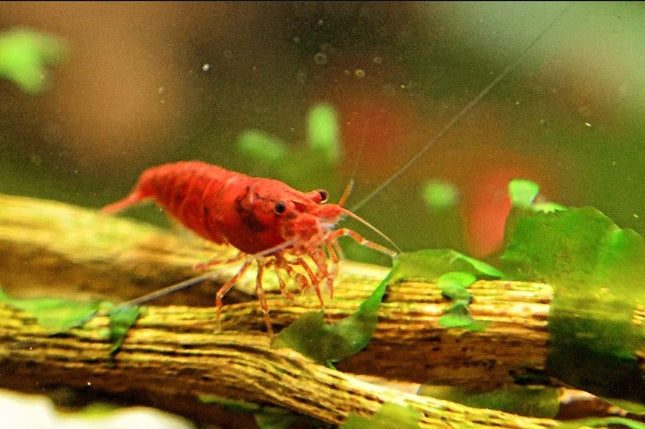
General care for shrimp: Temperature:18°-24°C Chlorine/chloramines: 0 ppm (very toxic for shrimp) Ammonia/Nitrite: 0 ppm. Nitrate: <20 ppm. pH: 6.2-7.5. GH: 4-8 dGH KH: 3-15 dKH Name Optimal TDS Limits Cherry shrimp 150 – 200 100 – 400 Cardinal shrimp 100 50 – 150 Tiger shrimp 180 – 220 100 – 300 We strongly recommend to drip acclimate any shrimp untill the TDS matches before you release the shrimp into your tank. Please note the above is just a general indication of the care requirements of shrimp. Results will vary depending on the individuals set up. NO SHIPPING TO WA
$12.00
![[RARE] Caridina Typus Australian Amano Shrimp - Nano Tanks Australia Aquarium Shop](http://nanotanksaustralia.com.au/cdn/shop/products/rare-caridina-typus-australian-amano-shrimp-506065.jpg?v=1702330333&width=645)
Meet Nature's Most Efficient Algae Cleaner! Short Description:Introducing the legendary Australian Amano Shrimp - the undisputed champion of aquarium algae control! These hardworking, peaceful shrimp are famous for their incredible appetite for algae and their tireless work ethic. A must-have for any planted aquarium seeking natural, chemical-free maintenance. Key Features & Highlights 🧹 ALGAE DESTROYING POWER: Voracious consumers of problematic algae types including hair algae, thread algae, and biofilm that other cleaners avoid 💪 INCREDIBLY HARDY: Adaptable to various water conditions and more resistant to parameter fluctuations than most ornamental shrimp ☮️ PEACEFUL COMMUNITY MEMBER: Completely harmless to fish, plants, and other tank inhabitants - perfect for delicate aquascapes 🔍 CONSTANTLY ACTIVE: Tireless workers that are always on the move, cleaning every surface and providing endless entertainment 🌿 PLANT SAFE: Will not damage or eat healthy aquarium plants, only the algae growing on them Detailed Description Discover why Amano Shrimp have been aquarium favorites for decades! Named after famous aquarist Takashi Amano, these transparent shrimp with their distinctive dotted-line patterns and reddish-brown markings are more than just pretty faces - they're dedicated cleaning machines that will transform your tank maintenance routine. What makes Amano Shrimp exceptional is their unmatched work ethic. While many algae eaters are selective, Amanos tackle the tough algae problems that frustrate aquarists. Their larger size and constant activity mean they cover more ground than smaller shrimp species, making them incredibly efficient at keeping your aquarium pristine. These social creatures thrive in groups and display fascinating behaviors as they work together to clean your aquarium. While they're famous for their algae-eating prowess, they're also entertaining to watch as they climb, explore, and interact with their environment. (Since we can't get the original Amano Shrimps is Australia due to Quarantine, we adopted the name the Australian Amano Shrimps) Perfect For: Planted aquariums of all sizes Natural algae control solutions Community tanks with peaceful fish Beginner and expert hobbyists alike Takashi Amano-inspired nature aquariums Specifications & Care Guide Parameter Requirement Scientific Name Caridina typus Common Names Australian Amano Shrimp Tank Size 10+ gallons Temperature 70°F - 80°F (21°C - 27°C) pH Range 6.0-7.5 Water Hardness Soft to hard (4-15 dGH) Adult Size 2 inches (5 cm) Diet Algae, biofilm, sinking pellets, blanched vegetables Lifespan 2-3 years Care & Feeding Tank Setup: Heavily planted tanks preferred Requires stable water parameters Peaceful tank mates essential Appreciates driftwood and hiding spots Diet: Primarily algae and biofilm Supplement with algae wafers Blanched vegetables (zucchini, spinach) Sinking shrimp pellets Behavior: Constantly active during daylight Social - keep in groups of 3+ Excellent climbers and explorers Safe with all aquarium plants Important Considerations ⚠️ BREEDING CHALLENGE: Requires brackish water for larvae development - difficult to breed in home aquariums 🚫 SENSITIVE TO COPPER: Cannot tolerate copper-based medications or fertilizers 🐠 PEACEFUL TANKMATES ONLY: May be preyed upon by larger, aggressive fish 🍽️ SUPPLEMENTAL FEEDING: Requires additional food in algae-scarce tanks 🔍 ESCAPE ARTISTS: Ensure tight-fitting lid as they may explore beyond the tank Live Arrival Guarantee Our Amano Shrimp are carefully acclimated and packed for their journey. Each order includes detailed care instructions and our live arrival guarantee ensures your shrimp arrive healthy and ready to clean. Ready to revolutionize your tank maintenance? Add these incredible cleaners to your aquarium today!
$25.00
![[ARRIVED 25 - MAY - 2025] Blue Butterfly Platy 3 - 5cm - Nano Tanks Australia](http://nanotanksaustralia.com.au/cdn/shop/files/arrived-25-may-2025-blue-butterfly-platy-3-5cm-477628.jpg?v=1748500857&width=645)
$10.00

The L066 pleco is a species of freshwater catfish native to the Amazon basin in South America. It is also known as the King Tiger Pleco, owing to its distinctive black and white striped pattern that resembles that of a tiger. The L066 pleco is a popular aquarium fish, known for its striking appearance and its ability to help keep tanks clean by eating algae and other debris. The L066 pleco can grow to be up to 12 inches (30 cm) in length, making it a relatively large fish. It has a flattened body shape and a large mouth with suction cups, which it uses to attach to surfaces in the aquarium. The L066 pleco is primarily nocturnal and will spend most of its time hiding in caves or under rocks during the day, coming out at night to feed. In terms of care, the L066 pleco requires a large tank with plenty of hiding places, such as caves, driftwood, or other decorations. It prefers soft, slightly acidic water, with a pH range of 6.0-7.5, and a temperature range of 75-82°F (24-28°C). The L066 pleco is an omnivorous fish, meaning it will eat a variety of foods, including algae wafers, sinking pellets, and fresh vegetables like zucchini and cucumber. Breeding L066 plecos in captivity can be challenging, as they require a large tank and specific water conditions to successfully spawn. The male will guard the eggs and the fry until they are large enough to fend for themselves. Overall, the L066 pleco is a beautiful and useful addition to a large aquarium. Its striking appearance and ability to help keep tanks clean make it a popular choice among hobbyists. However, it is important to provide the proper environment and care to ensure that the fish remain healthy and thrive in the aquarium.
$90.00 $69.00
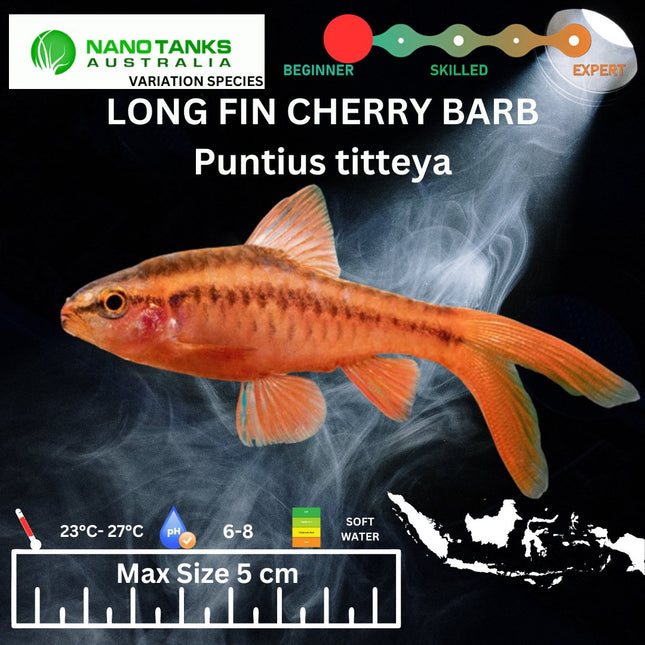
The Cherry Barb is found in heavily shaded streams and rivers in the Kelani to Nilwala basins of Sri Lanka. Feral populations of Cherry Barbs have also been found in Colombia and Mexico. They prefer areas of slow moving, shallow water with a bottom of silt and plenty of branches and leaf litter. In nature, this barb is an omnivore and feeds on diatoms, algae, invertebrates, and detritus. Cherry Barbs are very hardy little fish. They are great eaters and get along with most tankmates. Their water requirements are fairly easy to meet with regular partial changes. Provided with proper care, these little beauties make a great choice for the beginning fish keeper. Since they are omnivorous the Cherry Barb will generally eat all kinds of live, fresh, and flake foods. To keep a good balance, give them a high quality flake food every day. Feed brine shrimp (either live or frozen) or blood worms as a treat. Several small feedings a day are ideal, and at least one feeding a day is absolutely necessary. A general rule of thumb when offering food several times a day is to offer only what they can consume in 3 minutes or less at each feeding. When offering food just once a day, provide what they can eat in about 5 minutes. Cherry Barbs will swim in all parts of the tank, but especially like to take cover in planted areas. These very active fish will also need stretches of open areas for swimming. A small school will need at least a 40 litre aquarium. Provide good filtration and do regular water changes. These fish will do best and are most effectively displayed in tanks that simulate their natural habitat. They will appreciate an aquarium with lots of dense vegetation and floating plants where they can seek cover. Provide a dark substrate and an open area in the centre for swimming.
$8.00

Gold Rams, also known as Golden Ram Cichlids or Mikrogeophagus ramirezi, are a species of freshwater fish in the Cichlidae family. They are a popular aquarium fish among hobbyists, known for their beautiful golden coloration and peaceful nature. Gold Rams have a rounded, compact body with elongated dorsal and anal fins. They can grow up to 2.5 inches (6.4 cm) in length and have a lifespan of up to 4 years. The males of the species are typically more colorful than the females, with brighter and more vibrant golden hues. Gold Rams are native to the Orinoco River basin in South America, where they inhabit slow-moving and well-vegetated waters. In the aquarium, they require similar conditions, including a pH range of 5.5-7.5, a temperature range of 77-82°F (25-28°C), and soft to medium-hard water. Gold Rams are generally peaceful and do well in community tanks with other small, peaceful fish. They are also relatively easy to care for and can adapt well to different water conditions. They should be fed a varied diet that includes high-quality pellets, flakes, and live or frozen foods like brine shrimp and bloodworms. Breeding Gold Rams can be challenging, as they require specific conditions and can be sensitive to changes in water quality. The males will typically court the females by displaying their vibrant coloration and by digging a small pit for the female to lay eggs in. Once the eggs are laid, the male will guard and fan the eggs until they hatch into fry. Overall, Gold Rams are a popular and rewarding species of freshwater fish that can add a beautiful and peaceful element to an aquarium. They require specific care and conditions, but with proper care, they can thrive and display their unique coloration and behavior.
$30.00

Stability® will rapidly and safely establish the aquarium biofilter in freshwater and marine systems, thereby preventing the #1 cause of fish death: "new tank syndrome". Stability® is formulated specifically for the aquarium and contains a synergistic blend of aerobic, anaerobic, and facultative bacteria which facilitate the breakdown of waste organics, ammonia, nitrite, and nitrate. The bacteria employed by Stability® are non-sulfur fixing and will not produce toxic hydrogen sulfide. Stability® is completely harmless to all aquatic organisms as well as aquatic plants, thus there is no danger of over use. Stability® is the culmination of nearly a decade of research and development and represents the current state of the art in natural biological management. The bacteria used in competing products are inherently unstable. The conditions necessary for their growth and development fall into a very narrow range of temperatures, pH, organic loads, etc. When any of these parameters are not strictly within the proper range, the bacterial culture quickly crashes and dies. Stability® is not limited this way. The necessary conditions for the growth of Stability's™ bacteria strains encompass a very broad range. When other bacteria begin to die off (usually from high organic loads caused by the undetected death of an organism), Stability™ simply becomes more effective. Shake well before use. Turn off UV/ozone. Use 1 capful (5 mL) for each 40 L (10 US gallons) on the first day with a new aquarium. Then use 1 capful for each 80 L (20 US gallons) daily for 7 days. Fish and other aquatic species may be introduced at any time as long as dosage is maintained for 7 days. For optimum biofilter performance use 1 capful for each 80 L (20 US gallons) once a month or with each water change and whenever introducing new fish or whenever medicating an aquarium. Product shelf life is 4 years from date of manufacture. Stability® should ideally be used in conjunction with biological filtration such as Seachem Matrix™. For emergency ammonia control, use Seachem AmGuard™.
$69.00
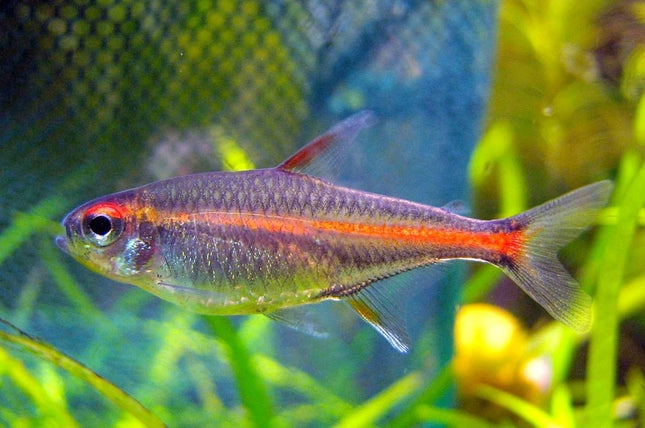
The Glowlight Tetra is a stunning addition to any fish tank, with its bright, glowing appearance. As an expert in the aquatic industry, we can assure you of its 2-4cm size and its unique characteristics that will enhance the beauty of your tank. Add a touch of radiance with this captivating fish.
$4.95

The Borneo Suckers Spotted species is a small, brightly colored freshwater fish native to the island of Borneo. It has an elongated body, with a rounded head and two large eyes. Its coloration is typically bright yellow or orange with black spots, though some individuals may also have white spots and some may have stripes. It has a single dorsal fin and two small pectoral fins. This species is found in slow-moving rivers, streams, and ponds and prefers to live near aquatic vegetation. It feeds primarily on worms, insect larvae, and small aquatic crustaceans. It is an omnivorous species and is relatively easy to keep in an aquarium.
$60.00
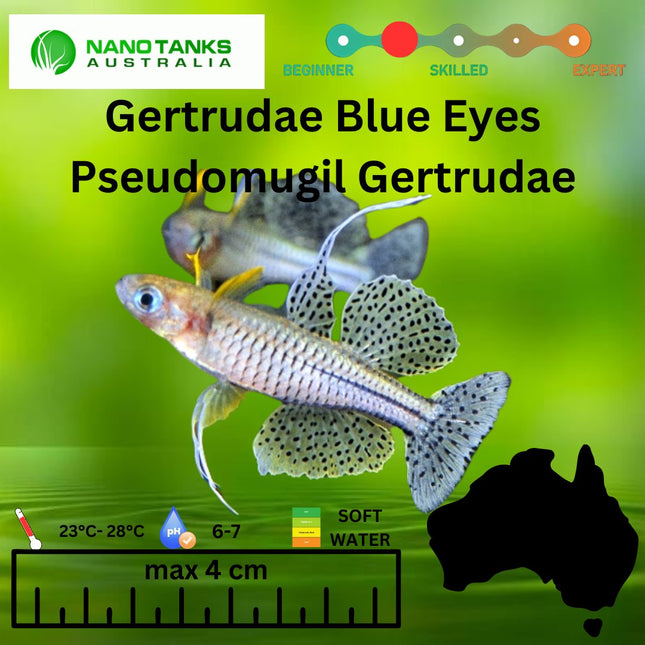
Weber, 1911 Spotted Blue-eye Species Summary Pseudomugil gertrudae is a small freshwater fish growing to a size of around 30 mm and is endemic to Australia and New Guinea. They have a moderately compressed and elongated body that is a semi-transparent silvery-blue colour, sometimes having an overall wash of golden-yellow, with the swim bladder clearly visible. They have two dorsal fins, very close together, the first much smaller than the second. The tips of the pectoral fins can be bright yellow, orange or orange-red, other fins often edged with white. The dorsal, anal and tail fins can be clear to white, silvery-grey or yellow with rounded or oblong dark spots scattered all over. Several rows of body scales are edged in black forming an attractive latticework pattern over the body. All scales except those of the mid-dorsal and mid-ventral rows have a spot varying in size and intensity from specimen to specimen and from time to time in the same specimen, forming about 6 rows of discontinuous lines, except for the mid-lateral stripe, which tends to be continuous from just below and in line with the origin of the first dorsal fin to the caudal peduncle. Females generally have a deeper body than the males whilst the adult males have larger dorsal, anal and pelvic fins, with extended filaments on the first dorsal and pelvic fins. Males also exhibit more intense spotting on the body and fins. This species has a patchy distribution where it occurs and as such, there is considerably variation between the different populations in colouration and body size, as well as fin size and shape. The variety from Weipa is one of the most impressive forms and can be found in Melaleuca swamps besides the road leading into town. A similar form can be found in Pappan Creek that flows into the Mission River. The forms typical of those found at the top of Cape York in areas such as the Jardine River (and its associated swamps) and Burster Creek have large round fins and multiple small spots. In Arnhem Land a nice form with golden body colours occurs in Goanna Lagoon while not far away in the Giddy River the fish have larger fins with larger spots but no golden body colour. Specimens collected in the Darwin region typically have orange pectoral fins. There are many other forms of this beautiful little fish and new ones are regularly being discovered. Pseudomugil gertrudae from the Aru Islands are larger and have an overall golden colour (fins and body). To date there has been no research published on the genetic or physical characteristics of the various populations. Pseudomugil gertrudae is very similar to the endemic New Guinea species, Pseudomugil paskai. Both species are characterised by rows of permanent spots covering the fins. The only differences being the colour and shape of the fins. Pseudomugil gertrudae were originally collected from Terangan Island (one of the Aru Islands), which lies directly south of the Vogelkop Peninsula in western New Guinea. They were described by Max Wilhelm Carl Weber, Professor of Zoology at the University of Amsterdam in 1911 and named "gertrudae" after the wife of Dr. Hugo Merton, a German naturalist who travelled through the Aru Islands between October 1907 and August 1908. Distribution Map (Absence from other catchments may reflect a lack of sampling rather than non-existence.) Distribution & Habitat In Australia, Pseudomugil gertrudae has been found in scattered localities in river systems which flow into the Timor Sea and Gulf of Carpentaria - from Darwin through Kakadu and Arnhem Land to Cape York Peninsula, including the offshore islands of Bathurst, Melville and Groote Eylandt, plus some of the islands in the Torres Strait. They are widespread throughout Cape York Peninsula, extending down the eastern coastal plains to around the Innisfail - Tully region. Their known distribution within Australia includes the Adelaide, Alligator, Blyth, Buckingham, Cadell, Cato, Daly, Finniss, Liverpool, and the Moyle River systems in the Northern Territory; including the smaller catchments around Darwin. In Queensland they have been found in the Barron, Coen, Dulhunty, Embley, Endeavour, Jacky Jacky, Jardine, Johnstone, McIvor, Moresby, Mulgrave, Murray, Olive, Russell, Tully and Wenlock Rivers, plus the smaller coastal streams. They have also been found in oligotrophic sand dune lakes in the Cape Flattery and Shelburne Bay region. The known New Guinean distribution includes the Aru Islands, the Pahoturi, Fly (Elevala River, Lake Bosset) and Bensbach (Torassi) river systems. They probably occur elsewhere along the southern coast of New Guinea that has suitable habitat. Pseudomugil gertrudae are found in small creeks, lagoons, billabongs, swampy marshes and rainforest streams, often associated with dense aquatic vegetation, woody debris and leaf litter. They are almost exclusively found in vegetated lagoons and backwaters with clear water where they can be seen swimming in the shallow waters along the margins. Floating species of waterplants or bottom rooted emergents with floating leaves occur in most, if not all, of their natural habitats. Substrates are usually mud or silt, and there is an abundance of water plants growing to the surface around the margins. Sometimes they may have water plants growing in the deeper water in the middle. Lagoons often have a thick layer of leaf litter around the margins. They are seldom found in turbid lagoons, even when there are abundant water plants. The water in some habitats is often intensely discoloured by tannic acids leached from decaying vegetation. These 'blackwater' habitats are generally acidic, with pH levels from 3.9 to 6.8, have low conductivity (dissolved ions), and vary in their dissolved organic matter, ionic composition, and colour. Alkalinity and hardness levels are very low. Factors contributing to these variations are age, formation, layers of low permeability and peats, proximity to the sea, surrounding vegetation, and the extent to which leaf litter accumulates and decays in the water. However, habitat conditions can vary substantially and Pseudomugil gertrudae have been collected from natural habitats within the following range of water conditions: Temperature: 12-34° Celsius pH 3.68-9.4 Conductivity: 12-646 µS/cm Hardness 0-320 ppm Alkalinity 2-180 ppm
$29.00

Distribution Unconfirmed but possibly collected in the vicinity of Timika, the capital of Mimika Regency, Papua province, Indonesia.HabitatCollected exclusively from submerged riparian vegetation of terrestrial origin, and at the Samba River habitat the water was murky brown with a pH around 6.0.Maximum Standard Length30 – 35 mm.Aquarium SizeAn aquarium with base dimensions of 45 ∗ 30 cm should be the smallest considered.Water ConditionsTemperature: 18 – 26 °CpH: 6.5 – 7.5Hardness: 36 – 215 ppmSource: https://www.seriouslyfish.com/species/pseudomugil-sp-red-neon/
$39.00
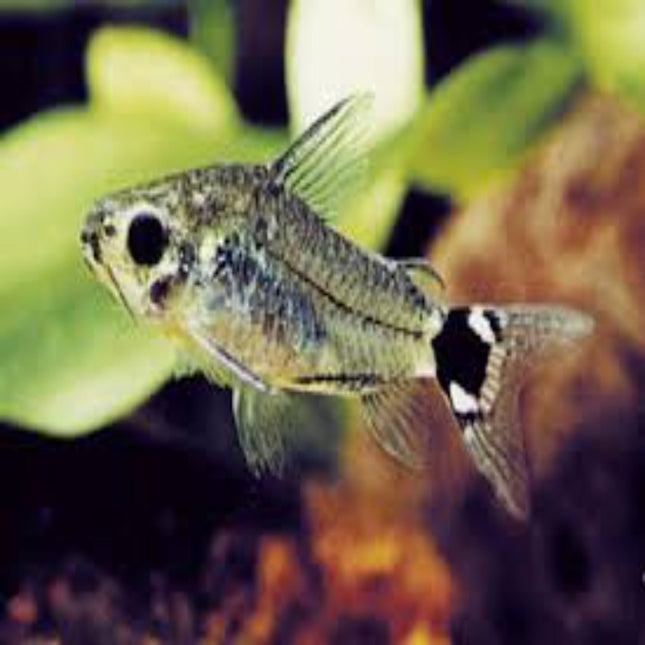
The Tiny Cory That Breaks All the Rules! Short Description:Meet Corydoras hastatus, the extraordinary dwarf cory that shatters expectations! Unlike its bottom-dwelling cousins, this miniature marvel spends most of its time swimming in mid-water schools, creating a dazzling display of synchronized movement. A perfect choice for nano tanks and peaceful community aquariums. Key Features & Highlights 🌊 MID-WATER SCHOOLING BEHAVIOR:** Watch in amazement as these corydoras school actively in the open water, unlike traditional bottom-dwelling species. Their synchronized swimming is mesmerizing. 🔍 TRUE DWARF SIZE:** Reaching just over 1 inch (2.5-3 cm), they are one of the smallest corydoras species, making them perfect for nano aquariums as small as 10 gallons. 🎨 SUBTLY STUNNING PATTERN:** A sleek silver body adorned with a horizontal black line and a distinctive black spot at the base of the tail, creating an elegant and sophisticated appearance. ☮️ PEACEFUL NANO COMMUNITY FISH:** Completely harmless and ideal for tanks with other small, peaceful species like microrasboras, small tetras, and shrimp. 👁️ FASCINATING TO OBSERVE:** Their unique behavior—alternating between mid-water schooling and brief bottom foraging—provides endless entertainment. Detailed Description Discover the captivating world of Corydoras hastatus, the dwarf cory that defies convention. Often called the "Micro Swordtail Cory" due to its shape, this species offers a completely different experience from typical corydoras. Their high-energy, schooling nature in the water column makes them a dynamic and engaging addition to any peaceful aquarium. While they will occasionally dart down to the substrate to forage like their larger relatives, their primary domain is the open water. A shoal of these tiny fish moving as one unified group is a breathtaking sight that brings a new dimension of activity to the middle levels of your tank. Their small size and minimal bioload make them an excellent choice for beautifully planted nano aquariums where every inch of space counts. Ideal For: Nano Aquariums (10+ gallons) Heavily Planted Tanks Peaceful Community Setups Shrimp Tanks Aquarists seeking unique behavior Specifications & Care Guide Parameter Requirement Scientific Name Corydoras hastatus Common Names Dwarf Sedge Cory, Micro Swordtail Cory Tank Size 10+ gallons Temperature 72°F - 79°F (22°C - 26°C) pH Range 6.0 - 7.5 Water Hardness Soft to moderately hard (2-15 dGH) Adult Size 1 - 1.2 inches (2.5 - 3 cm) Diet Omnivore (micropellets, flakes, live/frozen foods) Temperament Peaceful & Schooling Care & Feeding Tank Setup: Essential: Soft, sandy substrate to protect their delicate barbels. Recommended: Dense planting, including tall stems and floating plants, to provide security. Grouping: Must be kept in a shoal of 10 or more to see natural, confident behavior. Diet: High-quality micro-pellets or crushed flakes. Live or frozen foods like baby brine shrimp and daphnia. They will feed at the surface and mid-water, not just the bottom. Important Considerations ⚠️ SCHOOLING IS NON-NEGOTIABLE:** This is a strict schooling fish. It will be stressed, reclusive, and fail to thrive if kept in small numbers. A group of 10+ is a must. 🚫 SENSITIVE TO WATER QUALITY:** Like all corydoras, they require clean, well-oxygenated water with zero ammonia or nitrites. 🛡️ SECURITY IN NUMBERS:** A large group not only makes them happier but also encourages them to swim boldly in the open, providing a better display. 🐠 CHOOSE TANKMATES WISELY:** Their small size means they should only be kept with other peaceful nano fish. Any aggression will stress them immensely. Live Arrival Guarantee We carefully pack and ship our fish with the utmost care. Our live arrival guarantee ensures your Corydoras hastatus arrive healthy and ready for their new home. Please be prepared to acclimatize them slowly. Add a shimmering, living cloud to your aquarium. Order a school of these unique dwarf corydoras today!
$40.00 $34.00

☁️ Meet the White Cloud Mountain Minnow: Hardy, Beautiful & Unbeatable Value! Discover the fish that makes aquariums and outdoor ponds effortless! The White Cloud Mountain Minnow is a legendary favorite for a reason. This peaceful, shimmering shoaling fish flashes with brilliant red tails and a striking electric blue stripe, creating constant motion and color without any of the fuss. Extremely hardy and adaptable, White Clouds thrive where tropical fish can't, making them the perfect choice for beginners, cold-water aquariums, and even seasonal ponds. Simply sit back and enjoy their vibrant, active display! HIGHLIGHTS: Incredibly Hardy: Tolerates a wide range of temperatures and water conditions, perfect for beginners. Stunning & Active: Watch their shimmering silver bodies, neon blue stripe, and bright red tails create a dazzling display as they school. Peaceful & Social: A harmless, cheerful resident that does best in groups, making them ideal for community tanks and nano setups. Cold-Water Compatible: Does not require a heater, unlike most tropical fish! FISH CARE & REQUIREMENTS: Scientific Name: Tanichthys albonubes Common Name: White Cloud Mountain Minnow, White Cloud, "The Poor Man's Neon Tetra" Origin: Mountain streams of China (now endangered in the wild) Tank Size: 10 gallons minimum for a small school. The more you have, the more impressive the schooling behavior! Temperament: Very peaceful and excellent for community tanks with other small, non-aggressive fish. Water Parameters: Highly adaptable. pH: 6.0-8.0, Temperature: 64-72°F (18-22°C). They can even handle cooler temps, making them perfect for unheated tanks. Diet: Omnivorous. They eagerly accept high-quality flake food, micro-pellets, and love frozen or live foods like baby brine shrimp and daphnia. Adult Size: 1.5 inches (4 cm) Lifespan: 3-5 years with proper care. WHAT YOU GET: You will receive a group of five (5) live White Cloud Mountain Minnows. For the best appearance and behavior, we recommend groups of 6 or more.Please note: Color can intensify based on diet, water conditions, and during spawning displays. FAQ & KEEPING TIPS Do White Cloud Mountain Minnows need a heater?No! This is their superpower. They are a cool-water species and prefer room temperature water. They can even be kept in outdoor ponds year-round in many climates, as they can survive near-freezing temperatures as long as the water doesn't fully solidify. What are the best tank mates for them?They are incredibly peaceful. Excellent tank mates include other White Clouds, Zebra Danios, Celestial Pearl Danios, Pygmy Corydoras, and peaceful shrimp like Amanos or Ghost Shrimp. How can I encourage them to school tightly?While they will shoal loosely in a planted tank, providing more open swimming space and keeping a larger group (10+) will encourage the beautiful, tight schooling behavior they are known for. Why are they a great choice for beginners?Their hardiness is unmatched. They are forgiving of beginner mistakes and fluctuations in water parameters that would stress more sensitive species. They are also easy to feed and breed! 🏞️ A CLASSIC FOR ANY SETUP!Create a beautiful mountain stream biotope with smooth stones, driftwood, and hardy plants like Java Fern and Anubias. Their colors will pop against a dark substrate and green plants. They are also one of the most popular and rewarding fish for a self-sustaining patio pond! 🔒 LIVE ARRIVAL GUARANTEED: Your fish's health is our priority. We pack with extreme care using breather bags, insulated boxes, and season-appropriate packs. Please be available to receive your shipment for immediate acclimation. Review our live arrival policy for details. Add a school of effortless beauty to your tank. Choose your quantity and add White Clouds to your cart today!
$5.00 $2.95
🦐 Meet the Macrobrachium Australiense: The Captivating "Predator" of the Freshwater Shrimp World! Step beyond the ordinary with the Long-Armed Freshwater Shrimp, a fascinating and larger-than-life invertebrate that brings a touch of wild, predatory grace to your specialized aquarium. Hailing from the rivers of Northern Australia, this species is not your average cleaner shrimp—it's an active, intelligent hunter and an incredible display animal for experienced aquarists. Witness the ancient dance of survival as it uses its iconic long claws to forage, explore, and command its territory. This is the perfect centerpiece for a species-focused tank. HIGHLIGHTS: Striking & Primitive Appearance: Features remarkably long, slender claws, a translucent body that can display beautiful hues of grey and brown, and prominent, expressive eyes. Active & Engaging Behavior: A captivating display animal that is almost always on the move, hunting, and interacting with its environment. Expert Scavenger: Helps clean the tank by consuming meaty leftovers and detritus, acting as a unique cleanup crew. Breeding Challenge: For the advanced hobbyist, breeding these shrimp in captivity is a rewarding and impressive achievement. SHRIMP CARE & REQUIREMENTS: Scientific Name: Macrobrachium Australiense Common Name: Long-Armed Freshwater Shrimp, Australian Freshwater Prawn, Hunter Shrimp Origin: Northern Australia Tank Size: Minimum 20 gallons for a single specimen due to its territorial nature and size. Water Parameters: Pristine, well-oxygenated freshwater. pH: 7.0-7.8, Temperature: 72-82°F (22-28°C). Requires excellent filtration. Tank Mates: USE EXTREME CAUTION. This is a predatory shrimp. Not suitable for community tanks with small fish, dwarf shrimp, or snails. Best kept in a species-only tank or with large, fast-moving, top-dwelling fish. Diet: Carnivorous/Omnivorous. Requires protein-rich foods: sinking carnivore pellets, frozen bloodworms, brine shrimp, mysis shrimp, and small pieces of fish or mussel. Adult Size: Can reach up to 6 inches (15 cm) in length. WHAT YOU GET: One (1) live Long-Armed Freshwater Shrimp (Macrobrachium Australiense). Size will vary. We ship robust juveniles or sub-adults to ensure you enjoy them for their full lifespan.Please Note: As a wild-caught specimen, color and pattern can vary. They are masters of camouflage. ⚠️ IMPORTANT KEEPER NOTES & FAQ Is this shrimp safe with other fish and shrimp?No. This is the most critical point. The Long-Armed Shrimp is an opportunistic predator. Its natural behavior is to hunt small creatures with its claws. It will see small fish (tetras, guppies), dwarf shrimp (Neocaridina, Caridina), and snails as food. Keeping it with others is done at your own risk. What is the ideal tank setup?Provide plenty of hiding spots and visual barriers using driftwood, rock caves, and PVC pipes. This helps reduce territorial stress if keeping multiple individuals (which requires a very large tank). A secure lid is a must as they can be skilled climbers. Why is it hiding?This is natural behavior. They are often more active during dawn and dusk (crepuscular). After introduction or before a molt, they will hide for security. After molting, they are vulnerable until their new exoskeleton hardens. What do I feed it?While it will scavenge, a dedicated diet of meaty foods is essential for its health and longevity. Offer food directly to it using feeding tongs to ensure it gets enough to eat. 🏞️ THE ULTIMATE PREDATOR TANK!Create a stunning Australian riverbed biotope. Use sandy substrate, river stones, and driftwood. This shrimp is the perfect fascinating inhabitant for a tank that showcases the raw beauty of nature's food chain. 🔒 LIVE ARRIVAL GUARANTEED: This is a hardy but sensitive species. We package with the utmost care using breathable bags, specialized insulation, and a secure box. Please be prepared to acclimate it immediately upon arrival. Review our live arrival policy for complete details. Ready for an advanced invertebrate challenge? Add the formidable Long-Armed Shrimp to your cart!
$20.00
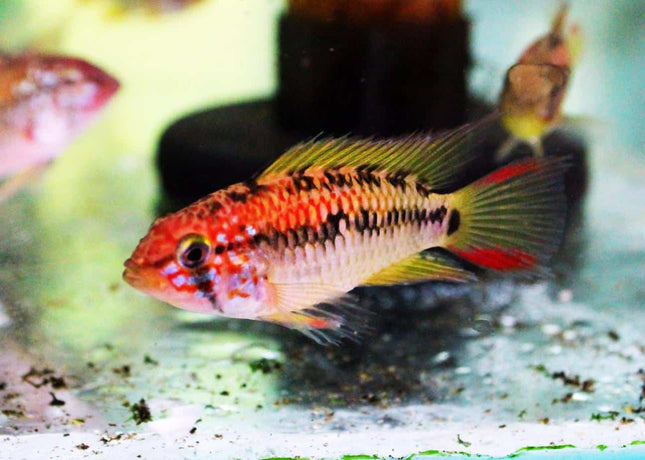
JUVIES/ SUB ADULTS SOLD Behold the Apistogramma Viejita Red Neck, a breathtaking dwarf cichlid that brings an explosion of fiery color and captivating behavior to the planted aquarium. Renowned for its stunning crimson-red throat and neck that contrasts dramatically with its shimmering blue and gold flecked body, this fish is a true centerpiece for discerning aquarists. Our specimens are healthy, vibrant, and captive-bred for hardiness and adaptability, ensuring you receive a fish that will thrive in your care. Key Features & Benefits: Stunning Visual Impact: The intense "Red Neck" is this fish's signature feature, creating a dazzling display of color that is constantly in motion. Captive Bred Advantage: Unlike wild-caught specimens, our Viejitas are acclimated to aquarium life, are less prone to disease, and accept a wider variety of foods. Ideal Size: As a true dwarf cichlid, they are perfect for well-planted aquariums from 60 litres (15+ gallons) and upwards. Fascinating Behavior: Watch their intelligent and curious nature unfold, especially during breeding when their colors intensify and their territorial instincts create a captivating spectacle. Product Details: Scientific Name: Apistogramma macmasteri (commonly referred to as "Viejita" morph) Common Name: Red Neck Apisto, Viejita Red Neck Origin: Captive Bred (Species originates from Colombia) Temperament: Peaceful but territorial, especially during spawning. Ideal for community tanks with peaceful, mid-to-top dwelling fish. Maximum Size: Approximately 6-8 cm (2.5-3.1 inches) Size Provided: 3-5cm (Juvenile to Sub-Adult) - You will receive healthy, well-started young fish. Their magnificent red coloration will continue to develop and intensify as they mature. Care Guide: Recommended Tank Size: 60 litres / 15 US gallons minimum for a pair or trio. Larger is always better, especially with multiple females. Water Parameters: Temperature: 24°C - 28°C (75°F - 82°F) pH: 5.5 - 7.0 (Slightly acidic to neutral is ideal) GH: Soft to moderate water is preferred. Diet: Omnivore. Thrives on a varied diet of high-quality micropellets, frozen or live foods like brine shrimp, daphnia, and bloodworms. Habitat Setup: A well-planted aquarium with plenty of hiding spots is essential. Provide caves (clay pots, coconut shells), driftwood, and leaf litter (Catappa leaves) to mimic their natural environment and reduce stress. A dark substrate will make their colors truly pop! Who is this fish for? This Apisto is perfect for: The aquarist looking to move beyond common community fish. Planted tank and biotope enthusiasts. Hobbyists fascinated by fish with personality and complex breeding behaviors. Anyone wanting to add a splash of intense, fiery red to their aquascape. Order with Confidence: Your live fish order is handled with utmost care. We package all livestock with professional breather bags and insulated boxes, complete with heat or cold packs as needed to ensure a safe journey to your door. ⚠️ Please Note: Color development is highly dependent on diet, water quality, and the fish's mood/status. The spectacular red neck will be most vibrant in dominant, healthy, and well-conditioned males. FAQ Section (Suggested for the product page below the description): Q: How many should I keep?A: Apistogramma are best kept as a pair (1 male, 1 female) or in a harem (1 male with 2-3 females) in a tank of sufficient size with plenty of visual barriers. Males can be territorial with each other. Q: Are they suitable for a community tank?A: Yes, with careful selection. Ideal tankmates are peaceful tetras, rasboras, pencilfish, and dwarf Corydoras. Avoid large or aggressive fish. Q: What is the difference between "Viejita" and "Macmasteri"?A: "Viejita" is a common name historically given to a specific colorful population of Apistogramma macmasteri. The names are often used interchangeably in the hobby for these brightly colored strains.
$50.00
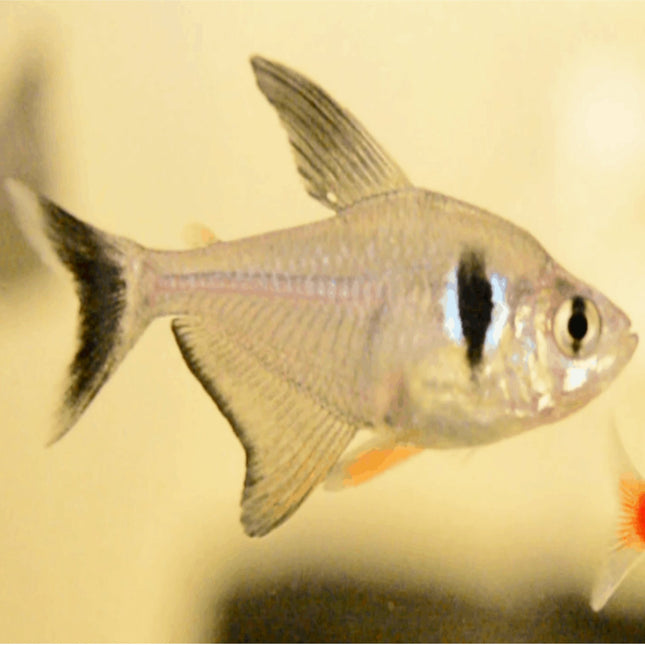
What is a Black Phantom? Black Phantom Tetra or Hyphessobrycon megalopterus are a Tetra (Characin) that is native to Brazil. What are the living conditions of Black Phantom Tetras? Black Phantom Tetras live in waters around 20 – 28°C. It inhabits soft, acidic waters and grow to around 4cm. Hardness is not an important factor for them but around 18-215ppm is tolerated. Are Black Phantom Tetras aggressive? Individually or in groups they are not aggressive. We have Black Phantom Tetras with Neon Tetras and we find them without issues. How many Black Phantom Tetras can I have? We suggest a group of 6 or more of Black Phantom Tetras in a tank. Do black phantom tetras lay eggs? Black Phantom Tetras is an egg scatterer and they lay there eggs amongst plants or weeds. They lay around 400 eggs at one spawning. How long do black phantom tetras live? Black Phantom Tetras live for around 4 years. What do Black Phantom Tetra eat? Black Phantom Tetras eat anything.. They are omnivorous in nature and can eat anything that falls in the water. Pellets, Flakes, Live Black worms, Frozen Blood Worms are taken up. What is your opinion on Black Phantom Tetra? We love Black Phantom Tetras, they are a great addition to any tank and we believe they should be more prominently placed in your tanks.
$6.00
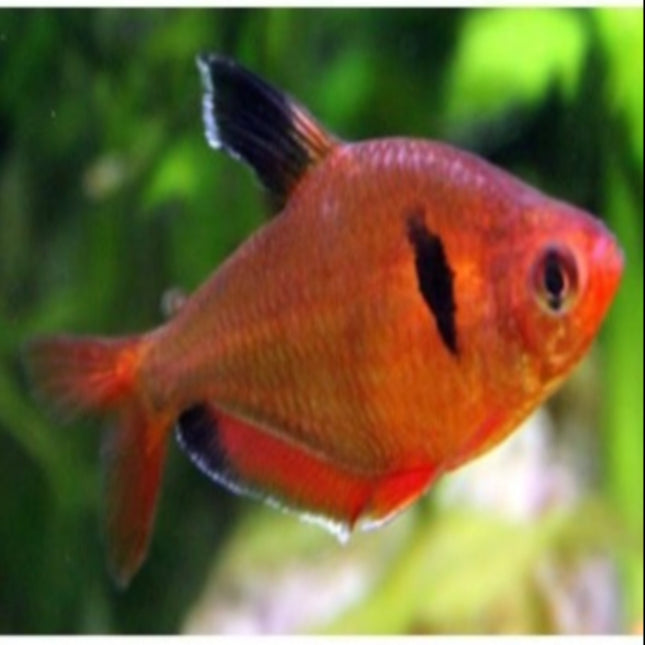
Hyphessobrycon sweglesi Temperature: 20 – 28 °C pH: 4.5 – 7.5 Hardness: 18 – 215 ppm Best in Groups of 6
$6.00
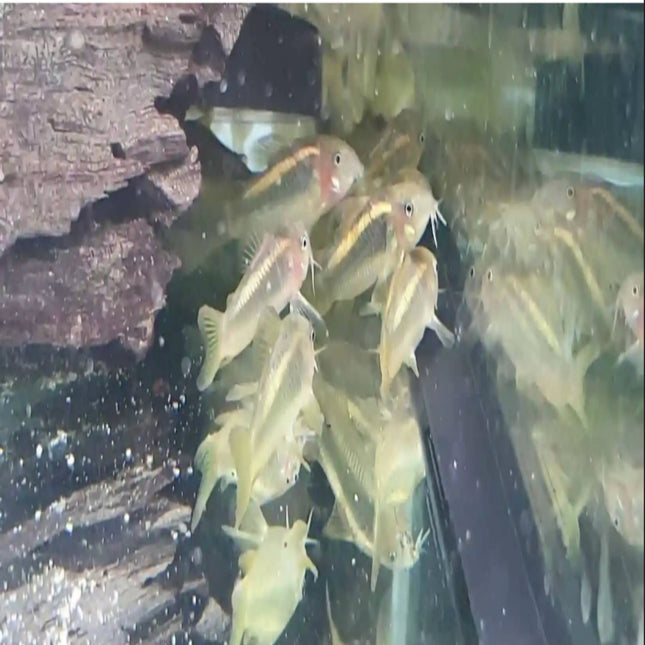
Synonyms N/ADistribution PeruSexual Dimorphism Females grow slightly larger and appear wider when viewed from above.Maximum Size 7.5cm (3”)Water Parameters Soft, acidic water is recommended. pH: 6.0-7.0, dH: up to 15 degrees.Temperature 20-27 deg C (70-80 deg F)Compatibility Soft water communityLighting No special requirements
$40.00

⚡ Discover the Empire Gudgeon: Dazzling Color Meets Hardy Character! Why choose between color and hardiness when you can have both? The Empire Gudgeon is a stunning Australian native that packs a massive visual punch without the fussy demands. Watch mature males flash their incredible crimson bodies and iridescent blue fins to command attention and become the undeniable centerpiece of your community tank. Ideal for beginners and experts alike, these peaceful yet full-of-personality fish are active swimmers that bring dynamic energy and a splash of outback brilliance to any setup. HIGHLIGHTS: Breathtaking Color: Males develop an intense, fiery red body with stunning electric blue accents on their dorsal and anal fins. Remarkably Hardy: Tolerant of a wide range of water parameters, making them an excellent choice for novice aquarists. Peaceful & Engaging: A peaceful community fish that displays fascinating territorial dances and social behaviors. Easy to Feed: Readily accepts a wide variety of foods, from high-quality flakes to frozen treats. FISH CARE & REQUIREMENTS: Scientific Name: Hypseleotris compressa Common Name: Empire Gudgeon, Empire Fish, Australian Empire Gudgeon Origin: Northern Australia, Papua New Guinea Tank Size: 20 gallons minimum for a pair; 30+ gallons for a small group. Temperament: Peaceful and suitable for community tanks. Males may show minor territorial displays towards each other but are rarely harmful. Water Parameters: Very adaptable. Prefers slightly alkaline water but is highly tolerant. pH: 6.5-7.8, Temperature: 72-79°F (22-26°C). Diet: Omnivorous. Thrives on quality flake or pellet food. Loves frozen or live foods like bloodworms, brine shrimp, and daphnia. Adult Size: Up to 3 inches (7-8 cm) Tank Setup: Prefers a well-planted tank with plenty of hiding spots and open swimming areas. Appreciates driftwood and rock structures. WHAT YOU GET: One (1) live Empire Gudgeon (Hypseleotris compressa). You will receive an unsexed juvenile. Please note: While juveniles are less colorful, males will develop their spectacular red and blue breeding coloration as they mature (typically between 4-6 months). FAQ & KEEPING TIPS How can I tell males from females?Males are the showstoppers! They develop the deep red body and vivid blue fin markings. Females are still attractive but remain more silvery-brown or golden with translucent fins. They are also typically smaller and rounder when full of eggs. Can I keep more than one?Absolutely! They do well in pairs or small groups. In larger tanks, keeping multiple females per male is ideal to distribute any amorous attention. You'll be rewarded with seeing their natural social interactions. What are good tank mates?Their peaceful nature makes them excellent residents in a community tank with other similar-sized, non-aggressive fish like rainbowfish, tetras, danios, Corydoras catfish, and other peaceful community species. How do I bring out their best color?A high-quality varied diet rich in carotenoids (from foods like bloodworms and brine shrimp) will enhance their red coloration. Stable, clean water and a low-stress environment also encourage them to display their most vibrant hues. 🏡 CREATE A SLICE OF AUSTRALIA!Recreate a natural biotope with driftwood, dense planting, and a sandy substrate. The Empire Gudgeon's brilliant colors will pop against a natural background, creating a breathtaking and serene aquatic display. 🔒 LIVE ARRIVAL GUARANTEED: The health of your fish is our top priority. We pack with exceptional care using breather bags, insulated boxes, and heat or cold packs as needed. Please be prepared to receive and acclimate your fish immediately. Review our live arrival policy for details. Ready for a hardy fish that looks like it isn't? Add the stunning Empire Gudgeon to your cart today!
$12.00
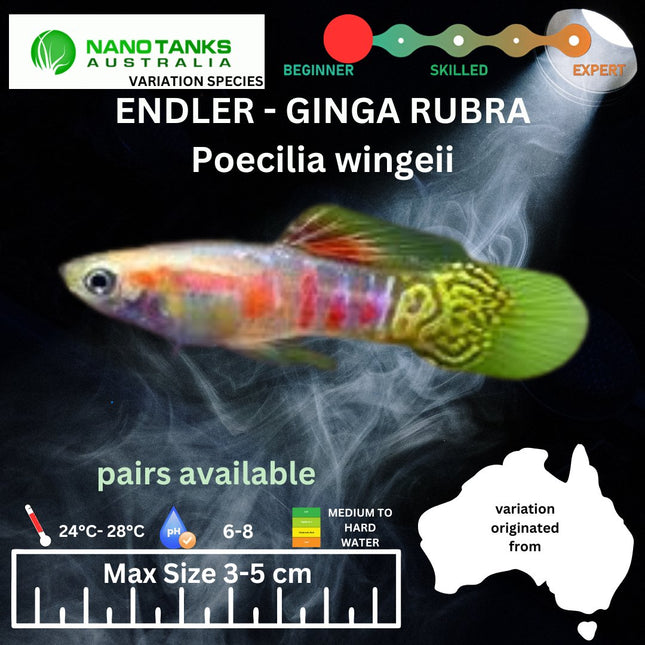
When buying endlers we recommend either going all males or a ratio of 1 male to 2 females or more. this is to ensure the females are not getting too stressed out by the males who will constantly chase them wanting to breed. Temperature: 24 – 28°C pH: 6.5 – 7.8 Hardness: 8-12 dGH Lifespan: 2+ years Max Size: 3-5cm Diet: Omnivore
$25.00 - $44.95

Care Level: BeginnerTemperament: CalmColoUr Form: Brown, Black, Blue, Purple, Gold and WhiteLifespan: One YearSize: 2 InchesDiet: HerbivoreFamily: AmpullariidaeMinimum Tank Size: 5 GallonTank Set-Up: Moderate Vegetation, AdaptableCompatibility: Community Tanks
$7.00
You have seen 1728 out of 1935 products